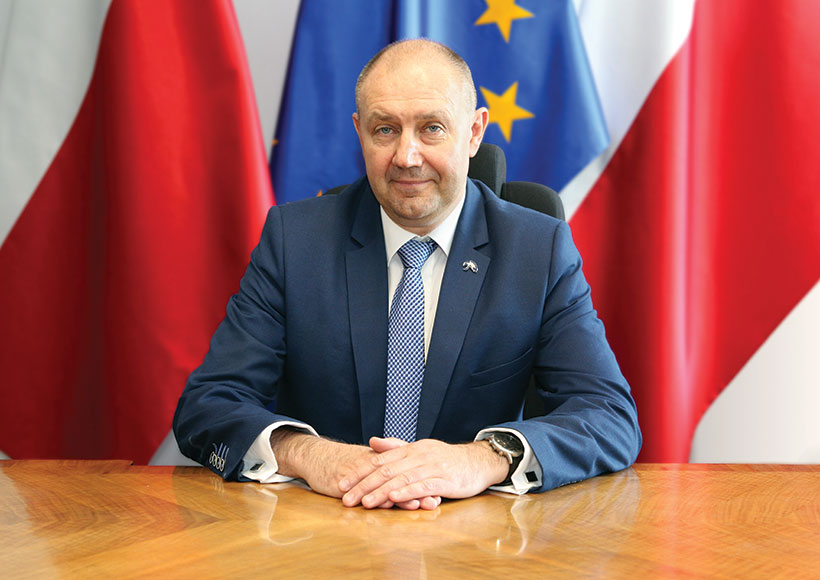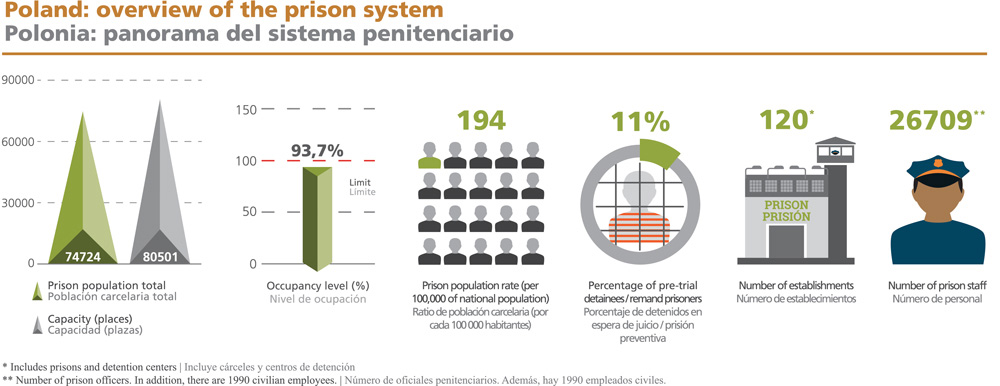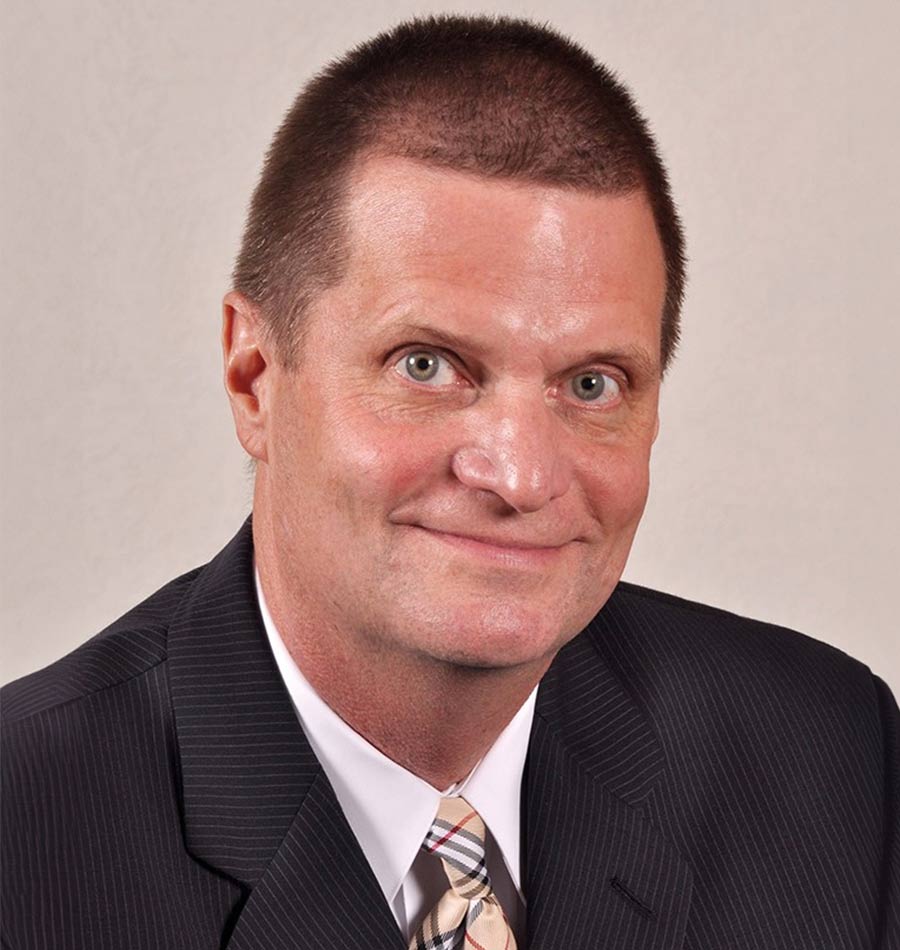// Interview: General Jacek Kitliński
Director General of the Prison Service, Poland
JT: Could you please give us an overview of the Polish prison system?
G. JK: Speaking of the Polish prison system I must mention that 11 November 1918 is an exceptional date, not only for Polish prisoners but also for all Poles. It was when the Polish State regained independence and returned to the world maps after 123 years of servitude.
In February 1919, the Head of State Józef Piłsudski signed the first legal acts regulating the Prison Guard, of which today’s Prison Service is the heir. For 100 years, the organisation has undergone transformations, adapting to both historical and geopolitical changing conditions.
Currently, as of 31 May 2019, the number of prisoners in prisons and pre-trial detention centres is 74,724 for a capacity of 80,501 places. The area in a residential cell should be nothing less than 3 m² per inmate, and this standard has been met for many years now. Our prisoners live in single or multi-person cells, the majority being two and three-person cells. The conditions for serving a sentence vary depending on the type of prison: closed, semi-open, and open.
In Polish prisons, the primary areas with an impact on our inmates’ re-socialisation process are work, learning, cultural and educational activities, sports, maintaining contact with family and the outside world, and various forms of therapy.
For the functioning of the prison system, our officers and employees are the most important resource, and most of them have higher education and specialised training. Currently, around 30,000 employees work in 120 prisons and detention centres.
We have a “regular programmed influence system” which covers both juveniles and adults who engage in self-directed work, with the support of educational personnel; moreover, we have 48 therapeutic branches directed at substance abuse convicts.
In addition, there are 23 therapeutic branches for inmates with non-psychotic mental disorders or suffering from mental impairments. In seven of these establishments, we have implemented a therapeutic and re-socialisation programme for convicts for crimes against sexual freedom and decency committed because of sexual preference disorders, including paedophilia. In fact, our specialised therapeutic interactions amount to about 10,000 convicted persons per year.
The whole Polish prison system is supplemented by fifteen diagnostic centres (located in detention centres or prisons) whose task is to deepen the psychological and psychiatric diagnoses of the inmates and direct them to the appropriate regime.
It should also be noted that prisons and detention centres for women occupy a separate and special place in our penitentiary structures. Among them, there are two prisons where mothers can serve their sentence with their children up to the age of three.
Another extremely important element is our Electronic Monitoring System, which from August 2018 onwards is entirely managed by the Prison Service.
In 100 years of existence, the Polish Prison Service has undergone a number of transformations and reforms, but from my point of view, the most important one was the establishment, in 2016, of a Modernisation Programme for 2017-2020, for which the Polish Government allocated more than 1.5 billion PLN (over €350 million) to the prison system.
The actions taken under this Modernisation Programme will certainly allow us to implement many solutions that we have not been able to achieve until now, as well as meet the challenges and our expectations.
The Modernisation Programme creates conditions for the correct and optimal performance of the Prison Service statutory tasks and it significantly improves effectiveness.
JT: What is the role of education and training in prisons and what is the level of development of prison work and industries?
G. JK: There is a network of eighteen Continuous Training Centres in the premises of penitentiary units, which carry out didactic tasks that enable our inmates to gain education or improve professional qualifications.
On average, about 3,000 convicts are taught every year in the schools located in prisons; thereby, once they have served their sentences, they can more easily overcome the obstacles of the modern labour market. Thanks to the efforts of the Prison Service, the educational offer is systematically adjusted to the reality of the changing job market.
Over the years, we have effectively used the opportunities created by European Union funds towards a positive influence on convicts. By way of example, I mention the project “Raising the professional qualifications of prisoners to return to the labour market after imprisonment”, which is currently underway. This project, worth 111 million PLN (over €26 million), is co-financed by the European Social Fund under the Operational Programme “Knowledge Education Development 2014-2020”. Under this program, by mid-2020, we will have trained over 46,000 convicted men and women.
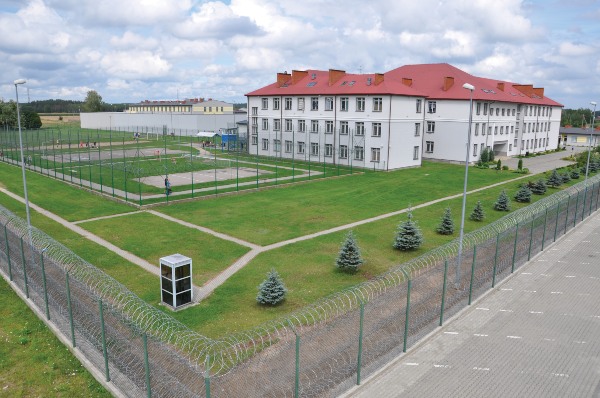
It should be noted that, in the opinion of the authorities that control the implementation of this type of projects, the Polish Prison Service is an institution that manages the allocated resources in an efficient, adequate and transparent way, achieving the metrics specified in individual projects.
In terms of prison work, we run the “Jobs for prisoners” programme, which has been comprehensively implemented by the Prison Service since 2016. An important element supporting this programme was the adoption, by the Polish government, of a package of legal solutions allowing entrepreneurs to employ prisoners on more favourable terms.
At present, almost 58% of prisoners work (an increase of 22% from 2016), while the employment rate in the group of convicts able to work is over 86%. In 2018, convicts worked for almost two million working hours, which was valued in almost 24 M PLN (about €105 M). In the last three years, we have put into operation twenty-five modern production facilities in the premises of our establishments and another twelve are under construction.
In the current situation of the Polish labour market, the employment of convicts is becoming increasingly popular among private entrepreneurs. Prisoners work for a fee, which is very important in economic terms, allowing them to be able, for example, to fulfil financial obligations imposed by judicial decisions.
Work carries with it not only economic value, but, above all, a great contribution to the re-socialisation and readjustment for the prisoners. It enables the acquisition of specific professional qualifications, elevates the level of social competence, helps to deal with negative emotions, and moulds a sense of duty.
Undoubtedly, all these elements support the process of returning to society after serving a sentence. The work that the convicts perform for free to the local government and the community is equally important, as it is an element of social compensation.
JT: What are the main achievements in terms of modernisation so far?
G. JK: The implementation of the Modernisation Programme creates conditions for the correct and optimal performance of the Prison Service statutory tasks and it significantly improves the effectiveness of activities, which in turn directly affects citizen and State security.
The Programme has two basic goals: the first is to improve the security of prisons and detention centres; the second is to improve working conditions for our staff. I am very happy with what we have already done. We equipped our units with modern cars, new weapons, communication assets and IT systems, and built several modern shooting ranges.
Moreover, we have already modernised the treatment system. An extremely important element of the Programme is the modernisation of infrastructures. Although, for me personally, the most important success is to increase the competitiveness of the prison staff salaries; on average, each officer will receive a salary increase of around 1000 PLN (about €235) in less than two years.
JT: In July 2018, the Council of Europe’s Committee for the Prevention of Torture and Inhuman or Degrading Treatment or Punishment (CPT) published the report on their visit to Poland in May 2017.
The Committee reiterates its call upon the Polish authorities to raise the minimum standard of living space per prisoner to at least 4 m². (Source: CPT/Inf (2018) 39 available here)
How are you addressing the infrastructure issue to meet the recommendations of the CPT?
G. JK: We take all possible measures to prevent the effects of overcrowding, treating as a priority the fact that all prisoners have a statutory right to the appropriate living space. We note, however, the need for changes in this area, which is why we are building ten new residential pavilions for 2,500 convicts. What is more, we plan to build five other innovative centres, each consisting of a modern 200-250 places’ residential pavilion, a production hall and a temporary house – this is the “Support for the Prison Service” project, under the Norwegian Financial Mechanism 2014-2021. All of this will enable us to increase the living space per inmate.
In addition to the Modernisation Programme, we have also taken several structural reforms, including the liquidation of fifteen small worn-out units and the refurbishment of another eighteen units, which brought not only economic benefits but also improved conditions for both staff and prisoners.
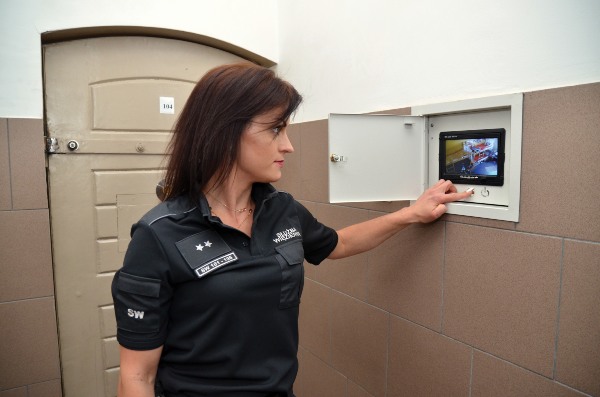
of Convicted Women, Poland
JT: What has been the role of alternative sentences in the reduction of the prison population and in the change of the Polish penal landscape, in particular the sentences that resort to the use of electronic monitoring?
G. JK: We have a comprehensive Electronic Monitoring System: twenty-five field teams, located in twenty-three units, have been created throughout the country. Tasks related to the EMS are performed nonstop by 125 officers and another 125 civilian staff members.
Currently, there are almost 5,000 people under electronic monitoring measures, whose monthly cost is almost ten times lower than their detention in an establishment. The take-up of the electronic monitoring system by the Prison Service, as well as the ongoing legislative work to expand electronic monitoring, will undoubtedly contribute to increasing non-custodial sentences.
Because the nature of these phenomena [radicalisation and the popularisation of violence] is dynamic, we need to cooperate with other services responsible for State security and to continue the actions already started (…)
JT: What are the main innovations and technologies in the Polish correctional system?
G. JK: An innovative project is the creation of the first ever higher education institution in the Prison Service: The College of Criminology and Prison Studies. This year, it will receive the first students who in the future are to join the ranks of our organisation.
This is aimed at responding effectively to the challenges of a changing world, and, at the same time, this is a tangible result of the set of actions aimed at the modernisation of the Prison Service, attracting young professionals capable of using modern techniques but who are also empathetic, realising that the humane and law-abiding treatment of prisoners is paramount.
All this is to help us meet the requirements of today’s world. However, we are aware of changes in geopolitics, hence crime is also developing and changing. We strive to keep abreast of all that is related to the provision of a widely understood public security, of which the Prison Service is an extremely important element. Therefore, we are active participants in conferences and symposia, including international ones, dedicated to challenges and threats related to terrorism, radicalism and extremism.
Even considering the huge technological advances that translate into ever newer solutions that criminals can use to disrupt the normal course of our service, we are not lagging behind. Our Modernization Programme has enabled us to buy the latest solutions in the fields of IT technology, communications, technical and defensive security as well as weapons and equipment, including shotguns and inspection cameras with a recorder to control hard-to-reach places.
Investments and purchases are carried out according to the individual needs of our units: we have a modern emergency call system, enabling direct contact of officers from their premises with prisoners in their cells; we have introduced modern solutions related to access control, as well as the method of issuing special keys to officers by introducing key depositors; also, we have implemented a wireless communication system and we bought modern drug detection tests and baggage screening devices; we are gradually introducing new cars for escorting prisoners, and our officers received new special uniforms.
JT: How does the Polish correctional system deal with the challenges of terrorism, radicalisation and extremism in prisons and whether you have intelligence mechanisms in place to prevent/counter those phenomena?
G.JK: Phenomena of radicalisation or popularisation of violence occur in society and are monitored by various State institutions. Some prisoners are serving sentences for crimes related to these phenomena and some others may be susceptible to the process of radicalisation, antisocial or anti-state attitudes and, in extreme cases, terrorist factions.
Because the nature of these phenomena is dynamic, we need to cooperate with other services responsible for State security and to continue the actions already started at this level. Thus, we participate in organised trainings focused on contemporary threats related to global terrorism and the phenomenon of radicalisation, based on both national and other European Union countries’ experiences.
At the same time, our Executive Penal Code and other legal acts in this area do not provide for the separation of persons arrested for terrorism-related crimes, for which separate procedures are applied with regard to their re-socialisation.
The interactions we carry out in a prison context are individualised and adapted to the diagnosed deficits, which are the reasons for the prisoner to have come into conflict with the penal law. The reduction of these deficits increases the probability of proper functioning in society after imprisonment. So far, in this particular area, we have not recorded any event that could threaten order in the penitentiary units or the safety of the people under our custody.
//
General Jacek Kitliński joined the Prison Service in 1993 as an educator and was later promoted to a management position in the Żytkowice and Rzeszów prisons’ therapeutic department. In 2001, he was transferred to serve the Central Board of the Prison Service. In 2007, he became the Prison Service Regional Director, and in March 2013 he became Deputy Director General. On 31 January 2015, by decision of the Prime Minister, he was appointed Director General of the Prison Service. Gen. Kitliński is a graduate of the Pedagogical University in Rzeszów, has completed postgraduate studies in the field of pedagogy at the University of Warsaw, and in management and command at the National Defense University.

